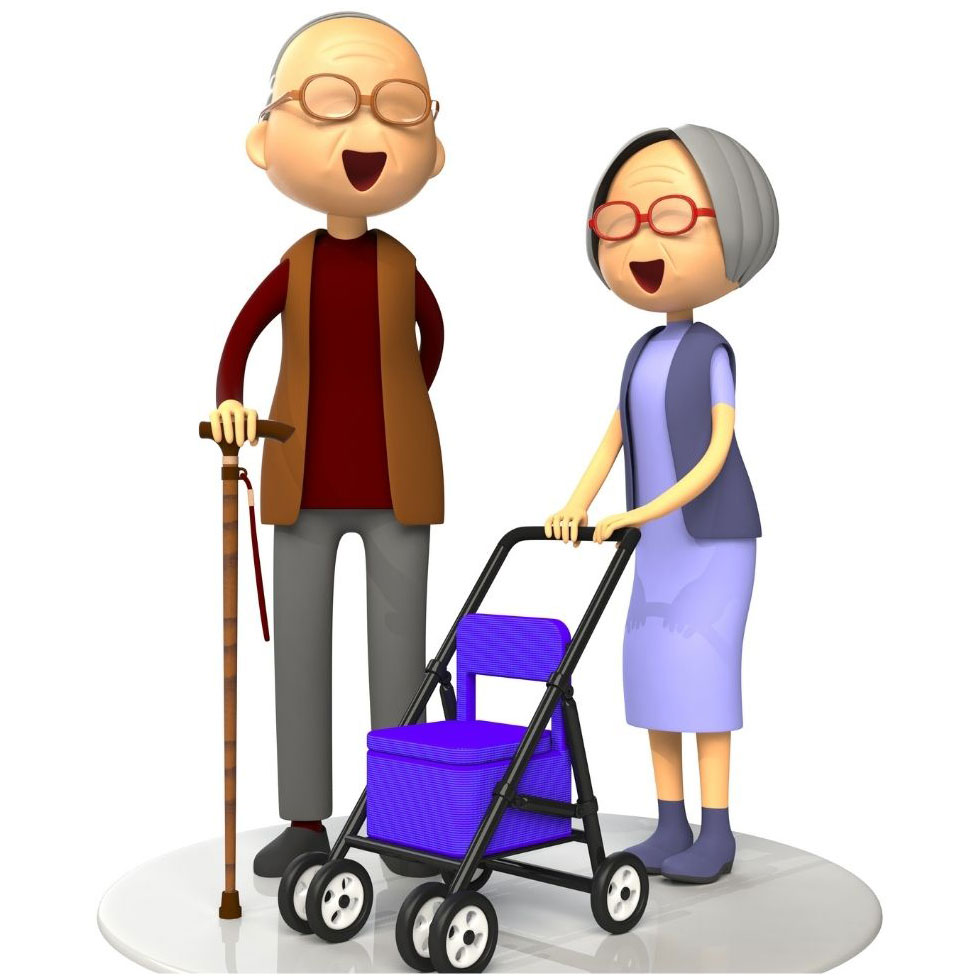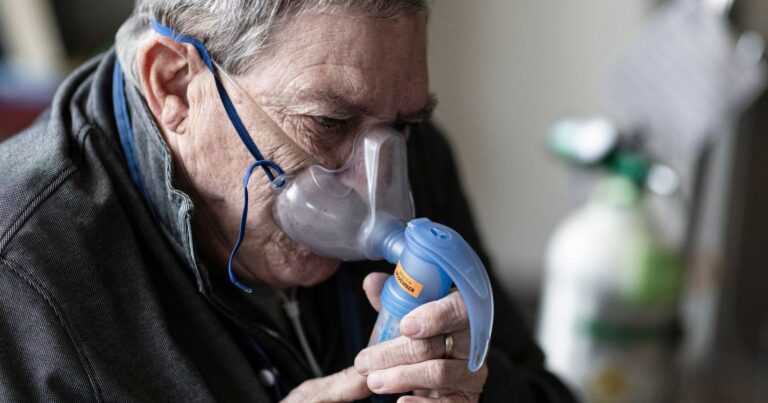When an overweight elderly person falls and needs help getting off the floor, it is important to approach the situation with care and consideration. This can be a challenging task, as the person’s weight may make it more difficult to lift them safely. However, with the right techniques and precautions, you can provide the necessary assistance while minimizing the risk of injury to both yourself and the elderly individual.
In this guide, we will provide step-by-step instructions and expert tips on how to safely and effectively help an overweight elderly person off the floor. It is important to note that every situation is unique, and the specific needs and abilities of the individual should be taken into account. If you are unsure about your ability to provide assistance or if the person appears to be seriously injured, it is always best to seek medical attention.
Help An Overweight Elderly Person Off The Floor: Understanding the Situation
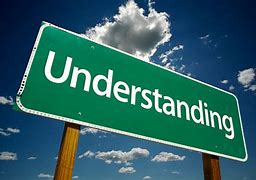
When an overweight elderly person falls and needs help getting off the floor, it is important to first understand the situation and assess the individual’s condition. This will help determine the appropriate course of action and ensure their safety.
One key aspect to consider is the reason behind the fall. Falls can occur due to various factors such as balance issues, muscle weakness, medication side effects, or environmental hazards. Understanding the cause of the fall can help prevent future incidents and address any underlying health concerns.
Additionally, it is crucial to assess the elderly person’s physical condition and any potential injuries they may have sustained from the fall. Check for any visible signs of injury such as cuts, bruises, or swelling. If there are any concerns about possible fractures or head injuries, it is important to seek medical attention immediately.
Furthermore, it is essential to consider the individual’s overall health and mobility. Being overweight can pose additional challenges when it comes to assisting them off the floor. Take into account any pre-existing medical conditions, such as arthritis or respiratory issues, which may affect their ability to move or tolerate certain positions.
Understanding the elderly person’s emotional state is also important. Falling can be a traumatic experience, and they may feel embarrassed, scared, or frustrated. Approach the situation with empathy and reassurance, ensuring them that help is on the way and that they are not alone.
By understanding the situation and assessing the elderly person’s condition, you can better tailor your approach to providing assistance. This will help ensure their safety, address any immediate medical needs, and provide the necessary support to help them get back on their feet.
Assessing the Elderly Person’s Condition
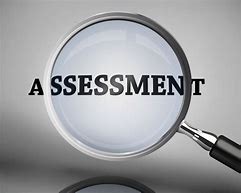
When helping an overweight elderly person off the floor, it is crucial to first assess their condition to ensure their safety and well-being. This step is essential as it allows you to determine the appropriate level of assistance required and identify any potential risks or injuries that may need immediate medical attention.
1. Approach with Care:
Approach the elderly person calmly and gently. Speak in a soothing tone to reassure them that help is on the way. Avoid sudden movements or loud noises that may startle or distress them further.
2. Check for Injuries:
Before attempting to lift or move the person, assess if they have any visible injuries or complaints of pain. Ask them if they are experiencing any discomfort or if they are unable to move certain body parts. If they have any severe injuries, such as broken bones or head trauma, it is crucial to call for emergency medical assistance immediately.
3. Determine Mobility:
Assess the elderly person’s mobility and ability to bear weight. Ask them if they can move their limbs or if they are experiencing any numbness or tingling. This information will help you determine the best approach to assist them off the floor.
4. Evaluate Mental State:
Observe the elderly person’s mental state and cognitive abilities. If they appear confused, disoriented, or unable to follow instructions, it may indicate a more serious underlying condition. In such cases, it is advisable to contact their healthcare provider or emergency services for further guidance.
5. Consider Existing Medical Conditions:
Take into account any pre-existing medical conditions the person may have, such as arthritis, osteoporosis, or cardiovascular issues. These conditions may affect their ability to move or bear weight, and you should adjust your assistance accordingly.
6. Assess Strength and Balance:
Evaluate the person’s strength and balance to determine if they can assist in the process of getting up. If they are able to bear some weight or use their upper body strength, you can guide them in using nearby furniture or assistive devices to aid in their movement.
By thoroughly assessing the elderly person’s condition, you can tailor your assistance to their specific needs and ensure their safety throughout the process. Remember to prioritize their comfort and dignity, and seek medical attention if necessary.
Ensuring Safety Precautions
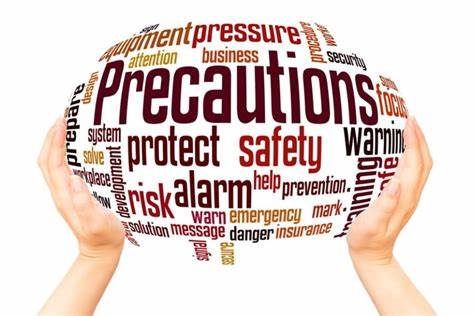
When helping an overweight elderly person off the floor, it is crucial to prioritize safety to prevent any further injuries or accidents. Here are some important safety precautions to keep in mind:
1. Assess the surroundings:
Before attempting to assist the elderly person, take a moment to assess the area for any potential hazards. Remove any objects or obstacles that may obstruct the path or cause tripping.
2. Use proper body mechanics:
Lifting an overweight individual can put strain on your back and other muscles. To avoid injury, remember to use proper body mechanics. Bend your knees, keep your back straight, and use your leg muscles to lift the person gradually.
3. Ask for assistance if needed:
Depending on the weight and condition of the elderly person, it may be necessary to ask for help from another person. Having an extra set of hands can make the process safer and more manageable.
4. Utilize assistive devices:
If available, consider using assistive devices such as a transfer belt or a mechanical lift to help lift the person off the floor. These devices can provide additional support and reduce the risk of injury.
5. Communicate throughout the process:
Maintain clear and open communication with the elderly person throughout the process. Explain what you are doing and ask for their input or feedback. This will help them feel more involved and in control of the situation.
6. Take breaks if necessary:
Assisting an overweight elderly person off the floor can be physically demanding. If you feel fatigued or strained, it is important to take breaks and rest as needed. Pushing yourself beyond your limits can increase the risk of injury to both you and the person you are helping.
Remember, every situation is unique, and it is essential to adapt these safety precautions to the specific needs and abilities of the individual. If you are unsure about the best approach or have concerns about your own physical capabilities, it is always advisable to seek assistance from a healthcare professional or a trained caregiver.
Communicating with the Elderly Person

When helping an overweight elderly person off the floor, effective communication is crucial. It is important to approach the situation with empathy, respect, and clear instructions to ensure their comfort and cooperation. Here are some tips for communicating with the elderly person:
1. Stay calm and reassuring:
Approach the elderly person calmly and speak in a soothing tone. Reassure them that you are there to help and that they are not alone.
2. Ask for permission:
Before providing any assistance, ask the elderly person if they would like your help. Respect their autonomy and allow them to make decisions about their own body.
3. Explain your actions:
Clearly communicate your intentions and actions before you proceed. Let them know what you are going to do step by step, so they are aware of what to expect.
4. Use simple and concise language:
Keep your instructions simple and easy to understand. Use short sentences and avoid using complex medical or technical terms.
5. Maintain eye contact:
Maintain eye contact with the elderly person while speaking to them. This helps to establish trust and shows that you are fully present and attentive to their needs.
6. Listen actively:
Give the elderly person an opportunity to express any concerns or fears they may have. Listen actively and respond empathetically to their feelings and emotions.
7. Be patient and understanding:
Understand that the elderly person may feel embarrassed or vulnerable in this situation. Be patient and allow them to take their time if they need it.
8. Offer encouragement:
Provide words of encouragement and praise throughout the process. Let them know that they are doing well and that you appreciate their efforts.
Remember, effective communication is not just about the words you use but also about your tone of voice, body language, and overall demeanor. By approaching the situation with empathy and clear communication, you can help the overweight elderly person feel more comfortable and confident as you assist them off the floor.
Providing Physical Support
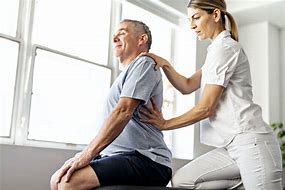
When helping an overweight elderly person off the floor, it is important to provide physical support in a safe and effective manner. Here are some steps to follow:
1. Assess the situation:
Before attempting to provide physical support, assess the elderly person’s condition. Determine if they are conscious, responsive, and able to communicate. If they are in pain or have any injuries, it is crucial to seek medical attention before attempting to move them.
2. Position yourself correctly:
Stand beside the elderly person, facing them. Keep your feet shoulder-width apart to maintain stability. Bend your knees slightly to maintain a stable base and prevent strain on your back.
3. Communicate and reassure:
Talk to the elderly person in a calm and reassuring manner. Let them know that you are there to help and that they are not alone. Explain your plan of action and ask for their cooperation.
4. Use proper lifting techniques:
If the elderly person is conscious and able to assist, instruct them to roll onto their side. Kneel down beside them and place one arm under their shoulder and the other arm under their hip. Slowly and carefully help them roll onto their back, using your legs to lift and support their weight. Avoid pulling or jerking movements, as this can cause injury.
5. Maintain good body mechanics:
As you lift the elderly person, remember to use your legs and not your back. Keep your back straight and avoid twisting or bending at the waist. This will help prevent strain and injury to yourself.
6. Provide additional support if needed:
If the elderly person is unable to assist or has limited mobility, you may need to use additional support. This can include using a sturdy chair or bed to help them push themselves up, or using a transfer belt or gait belt to provide stability and leverage.
7. Move slowly and carefully:
Take your time when helping the elderly person off the floor. Move slowly and carefully to avoid any sudden movements or jerks. This will help prevent further injury and ensure their safety.
Remember, it is important to prioritize the safety and well-being of the elderly person when providing physical support. If you are unsure or uncomfortable with the situation, it is always best to seek professional help or medical assistance.
Using Assistive Devices
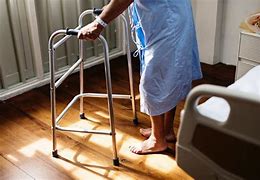
When helping an overweight elderly person off the floor, it may be necessary to utilize assistive devices to ensure their safety and make the process easier for both the caregiver and the individual. These devices can provide additional support and stability, reducing the risk of injury during the transfer. Here are some commonly used assistive devices that can be helpful in this situation:
1. Transfer belts:
Transfer belts, also known as gait belts, are wide and sturdy belts that can be wrapped around the waist of the elderly person. They provide a secure grip for the caregiver to hold onto while assisting the individual in getting up from the floor. Transfer belts distribute the weight more evenly and allow for better control during the transfer.
2. Sliding boards:
Sliding boards are flat boards made of smooth material, such as plastic or wood, that can be placed under the elderly person. These boards help in reducing friction and allow for easier movement from the floor to a higher surface, such as a chair or bed. The caregiver can gently slide the individual onto the board and then assist them in standing up.
3. Lift chairs:
Lift chairs are specially designed chairs that can be raised or lowered to assist individuals in sitting down or standing up. These chairs have a motorized mechanism that lifts the person to a standing position, reducing the strain on both the caregiver and the elderly person. Lift chairs are particularly useful for individuals with limited mobility or strength.
4. Walking aids:
Depending on the individual’s mobility, walking aids such as canes, walkers, or rollators can be used to provide additional support during the transfer. These aids can help the elderly person maintain balance and stability while getting up from the floor. It is important to ensure that the walking aid is properly adjusted and that the individual feels comfortable using it.
Before using any assistive device, it is crucial to familiarize yourself with its proper usage and safety guidelines. Additionally, it is recommended to consult with a healthcare professional or occupational therapist who can provide guidance on the most suitable assistive devices for the specific needs of the overweight elderly person.
By utilizing assistive devices, caregivers can ensure a safer and more comfortable transfer for overweight elderly individuals who have fallen. These devices not only provide physical support but also help in maintaining the individual’s dignity and independence throughout the process.
Encouraging Movement and Exercise

Encouraging movement and exercise is crucial for the overall well-being of an overweight elderly person. Regular physical activity can help improve strength, balance, and flexibility, which can reduce the risk of falls in the future. However, it is important to approach this step with caution and consider the individual’s capabilities and limitations.
1. Start with gentle movements:
Begin by encouraging the elderly person to perform gentle movements while still on the floor. This can include simple stretches or range-of-motion exercises for the arms and legs. These movements can help warm up the muscles and prepare them for standing up.
2. Gradually progress to standing:
Once the person feels comfortable with the initial movements, you can assist them in gradually transitioning to a standing position. This can be done by supporting them under their arms and guiding them to push up from the floor using their legs. It is important to provide enough support to prevent any strain or injury.
3. Encourage walking:
After the person is standing, encourage them to take a few steps to regain their balance and stability. Walking can help improve muscle strength and coordination. Start with short distances and gradually increase the distance as the person becomes more comfortable and confident.
4. Consider exercises tailored to their needs:
Depending on the individual’s abilities and preferences, you can suggest specific exercises that are suitable for their condition. This may include chair exercises, water aerobics, or low-impact activities like tai chi or yoga. It is important to consult with a healthcare professional or a qualified exercise specialist to ensure the exercises are safe and appropriate.
5. Provide ongoing support:
Encouraging movement and exercise should be an ongoing process. Regularly check in with the elderly person to see how they are doing and offer support and motivation. Consider involving them in group exercise classes or activities to provide social interaction and additional motivation.
Remember, it is essential to respect the elderly person’s comfort level and never push them beyond their capabilities. Always prioritize their safety and well-being throughout the process. By encouraging movement and exercise, you can help improve their overall health and quality of life.
Seeking Medical Attention if Necessary

When helping an overweight elderly person off the floor, it is important to assess their condition and determine if medical attention is necessary. While some falls may result in minor injuries that can be managed at home, others may require professional medical intervention. Here are some factors to consider when deciding whether to seek medical attention:
1. Assess the severity of the fall:
If the elderly person experiences a hard fall or hits their head, it is crucial to seek medical attention immediately. Head injuries can be serious, and it is better to err on the side of caution. Look for signs of confusion, dizziness, or loss of consciousness, as these may indicate a more severe injury.
2. Observe for pain or discomfort:
If the elderly person complains of pain or discomfort after the fall, it is important to assess the location and intensity of the pain. If there is significant pain, swelling, or deformity in any body part, it may indicate a fracture or sprain that requires medical attention.
3. Check for any visible injuries:
Look for cuts, bruises, or abrasions on the elderly person’s body. If the injuries are deep, bleeding heavily, or require stitches, it is advisable to seek medical attention. Additionally, if there are any signs of infection, such as redness, warmth, or pus, medical intervention may be necessary.
4. Consider the person’s medical history:
If the elderly person has pre-existing medical conditions, such as osteoporosis, arthritis, or cardiovascular problems, they may be at a higher risk of complications from a fall. In such cases, it is advisable to consult a healthcare professional to ensure appropriate care and management.
5. Monitor for changes in behavior or cognition:
Falls can sometimes result in psychological distress or cognitive changes in elderly individuals. If you notice any unusual behavior, confusion, memory loss, or changes in mood following a fall, it is important to seek medical attention to rule out any underlying issues.
Remember, it is always better to seek medical advice when in doubt. Healthcare professionals can provide a thorough evaluation and determine the best course of action for the elderly person’s well-being. Prompt medical attention can help prevent further complications and ensure appropriate treatment and care.
Frequently Asked Questions
How to lift a heavy elderly person off the floor?
1. Call for professional help if the person is injured or you’re unsure if you can lift them without causing harm.
2. Try to encourage the person to assist in their own lift by using any upper body strength they have. They may be able to push up on a sturdy piece of furniture.
3. If they’re not injured and you feel it’s safe to lift them, position yourself close to them, bend your knees and keep your back straight. Try to lift using your leg muscles rather than your back.
4. Use a transfer or gait belt if available. This is a special belt that can provide a safe grip around the person’s waist.
5. Always make sure to move slowly and carefully.
How to help an elderly person off the floor?
1. The above steps apply.
2. Encourage them to roll onto their side, then onto their hands and knees. Provide support as needed.
3. Position a chair or other sturdy piece of furniture in front of the person.
4. Ask them to use their stronger hand and leg to push up onto the furniture.
5. Once they are in a semi-standing position, help them pivot to sit down in the chair.
How to help an overweight person get up?
1. The same basic steps apply here too, but you need to be more cautious about potential injuries both to yourself and the person you’re assisting.
2. It might be necessary to call for additional help due to the person’s weight. Don’t attempt to lift someone if you’re unsure you can do it safely.
3. Use any available lifting aids. Transfer or gait belts can be particularly useful in these situations.
How to help a senior who has fallen?
1. Firstly, don’t rush. Calmly check for injuries – ask them if they’re hurt and look for signs of injury.
2. Call for professional medical help if they are injured or cannot move.
3. If they seem uninjured and want to get up, proceed as described above
Other Places For You To Explore
Explore
Conclusion
In conclusion, helping an overweight elderly person off the floor requires careful consideration and proper technique to ensure their safety and well-being. By following the steps outlined in this article, you can provide effective assistance and support to the individual in need.
It is important to understand the situation and assess the elderly person’s condition before attempting to help them. This includes checking for any injuries or pain they may be experiencing. Ensuring safety precautions such as removing any hazards or obstacles from the surrounding area is crucial to prevent further accidents or injuries.
Communication plays a vital role in providing assistance. It is essential to speak calmly and reassuringly to the elderly person, explaining what you are going to do and asking for their cooperation. This helps to build trust and alleviate any anxiety they may have.
When providing physical support, it is important to use proper lifting techniques to avoid straining your own back or causing harm to the elderly person. This may involve using your legs to lift rather than your back and keeping a firm grip on their body to maintain stability.
Assistive devices such as a sturdy chair or a walker can be used to provide additional support and stability during the process. These devices can help distribute weight and make it easier for the elderly person to regain their balance and stand up.
Encouraging movement and exercise is essential for the overall well-being of the elderly person. Regular physical activity can help improve strength, balance, and flexibility, reducing the risk of falls in the future. Simple exercises such as walking or gentle stretching can be beneficial.
If the elderly person appears to be in significant pain or is unable to stand up despite your efforts, it is important to seek medical attention. A healthcare professional can assess the situation and provide appropriate care or further assistance if needed.
In conclusion, helping an overweight elderly person off the floor requires patience, empathy, and proper technique. By following the steps outlined in this article, you can provide the necessary support and assistance to ensure their safety and well-being. Remember to always prioritize their comfort and communicate effectively throughout the process.
